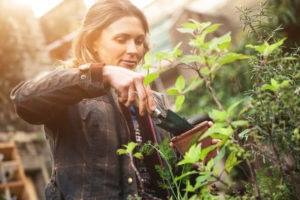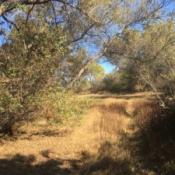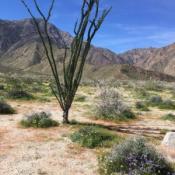 What do you feel connected to?
What do you feel connected to?
Which elements in your life nurture and sustain you?
Connection is probably the deepest need of human beings. However, we live in an age in which it’s easy to feel disconnected.
For most of human history, people lived very differently than most of us do now. Most people used to live in a community; it was relatively uncommon to live alone. People hunted, foraged, or grew most of their food. This gave them an understanding of natural cycles: the relationships between wind and water, air and sun, soil and earth—all of which comprise our very selves. People traded their harvests with neighbors and nearby communities so everyone’s needs were met.
These closer relationships weren’t perfect, nor should they be romanticized. Many societies of yesteryear offered fewer choices and a lot more pressure to conform. The discrimination could be crushing: racism, sexism, and homophobia were often unquestioned, and unfortunately proved fatal for many. On the other hand, it wasn’t the norm for vast numbers of people to suffer for decades with the deep hunger of a soul starved for connection. The rates of cancer and autoimmune diseases were far lower. Many people had a sense of interdependence, community, and belonging.
Unfortunately, people tend to “progress” without asking whether it’s sustainable or good for them. Today, it takes effort to feel connected. Many people seek therapy as part of that effort.
Many people live alone. Some don’t know their neighbors, even in large cities.
Our basic sustenance comes largely from remote farms, machines, and factories we’ll never see, harvested and transported by workers we’ll never meet. We pluck our food not from the soil but from boxes and cans and (gasp) plastic, in artificially lit grocery stores and fast-food restaurants. The bright colors on the wrappers are designed to tantalize the same brain centers that are instinctively drawn to deep, beautiful colors in nutritious plants. Compared to the plants, the wrappers are a poor substitute. Even the plants and animals we eat are manipulated with artificial lights, space restrictions, hormones, and chemicals.
Worst of all, these production systems tend to be linear, not cyclical. They focus on creating a product in a competitive market where the dollar is the bottom line, and there’s tremendous waste along the way. Two examples are “manure lagoons,” vast lakes of animal waste created by factory farming that choke everything around them, and the gargantuan amounts of plastic circulating in the ocean, killing and poisoning wildlife. An astonishing array of industrial chemicals find their way into our bodies, not only from our food but also from our water, air, and cosmetic products. Natural systems have no waste and no trash: everything is recycled, every bit of organic and inorganic material, even the bodies we inhabit.
People have a deep need for connection—to each other and to the natural cycles and systems that create and support our bodies. If we don’t feel connected, we suffer. Isolation kills. It destroys our physical and mental health. You can be isolated even while surrounded by others; this is called emotional isolation. As it turns out, it’s the quality of relationships rather than the quantity that sustains us.
You can also be isolated from the natural cycles of the environment that have sustained us for hundreds of thousands of years. It’s not natural to go years or decades without seeing nature in its many forms: vast groves of trees stretching across hillsides; the jagged granite of mountains rising majestically; ripples of lake water sparkling like jewels in the sun; or the wide-open stretches of meadows streaked with wildflowers.
Ecotherapists call this lack of connection with the natural world “nature deficit disorder.” I believe this disconnection is fueling the widespread destruction of our environment. It’s difficult to destroy what we love and feel connected to. Many people find that connecting in some way with the earth and its living forms is grounding and calming, bringing them into a sense of aliveness in the present moment. For many people, including atheists, it brings a certain satisfaction that some would call spiritual: feeling our place in the natural order of things.
You can’t put technology back into Pandora’s box. It refuses to go. So at this point, we must ask, how do we create the best of all worlds? How do we develop systems that support us, but in a sustainable manner? How do we cultivate protection and deep regard for the other creatures who share and contribute to the thin, delicate biosphere we live in?
How do we create the best of all worlds? How do we develop systems that support us, but in a sustainable manner? How do we cultivate protection and deep regard for the other creatures who share and contribute to the thin, delicate biosphere we live in?
These are big questions, but many of us are aware of some of the answers. My sense is that at the heart of it all is connection: with other people and with the basic natural systems that created and sustain us.
When people disconnect and isolate, it is almost always because they have not felt truly seen, understood, and appreciated for who they are, “warts and all.” They have not felt safely held and treasured in love and acceptance. Or perhaps such a sense was fleeting, later shattered. This creates a pattern of avoidant attachment in which being alone assures peace and basic self-regulation. But underneath, at some level, is a deep yearning to be held in relationship.
Connection also means feeling part of something bigger than yourself, and that you are contributing to it. This creates a sense of meaningfulness and satisfaction. Life can be chaotic, unpredictable, brief, and often not what we thought we wanted or expected from it. Making meaning of our lives tends to become even more important as we get older. What have we helped create that will outlast us? How have we made things better?
I often suggest to people in therapy that these elements of connection, meaning, and sustainability in our lives are not luxuries. They are basic necessities. This becomes even more the case when one experiences anxiety or depression: one’s buffer or reserves run low, and some recharging is needed. In fact, many trauma therapists and ecotherapists see things the opposite way: that mental health issues, which are usually treated as an individual problem, can often be natural reactions to unnatural circumstances like trauma, disconnection, and the widespread destruction of nature.
So how can we create connection, meaningfulness, and sustainability? How can humanity commit to such a shift in our way of being on earth?
Obviously, large-scale changes are needed, and they are going to have to occur in steps.
As an individual, what steps can you take to stop consenting to a way of life that, in the long run, doesn’t serve you? What needs to happen to serve and support people you care about? What animal species (besides cockroaches, which are pretty much a shoo-in) would you like to see survive the next 100-or-so years?
What are you doing, or what are you willing to start doing? I invite you to post your thoughts and ideas in the comments section below.
References:
- Heller, L., & LaPierre, A. (2012). Healing Developmental Trauma: How Early Trauma Affects Self-Regulation, Self-Image, and the Capacity for Relationship. Berkeley, CA: North Atlantic Books.
- Isolation. Retrieved from https://www.goodtherapy.org/learn-about-therapy/issues/isolation
- Olien, J. (2013). Loneliness Is Deadly. Retrieved from http://www.slate.com/articles/health_and_science/medical_examiner/2013/08/dangers_of_loneliness_social_isolation_is_deadlier_than_obesity.html
© Copyright 2018 GoodTherapy.org. All rights reserved.
The preceding article was solely written by the author named above. Any views and opinions expressed are not necessarily shared by GoodTherapy.org. Questions or concerns about the preceding article can be directed to the author or posted as a comment below.

 A World-Sized Heartache: Are We Helpless in Our Eco-Anxiety?
A World-Sized Heartache: Are We Helpless in Our Eco-Anxiety? Finding Green Amid the Urban Gray: Lessons from an Hour in Nature
Finding Green Amid the Urban Gray: Lessons from an Hour in Nature Of Wildflowers and Worries: Living in an Age of Eco-Anxiety
Of Wildflowers and Worries: Living in an Age of Eco-Anxiety